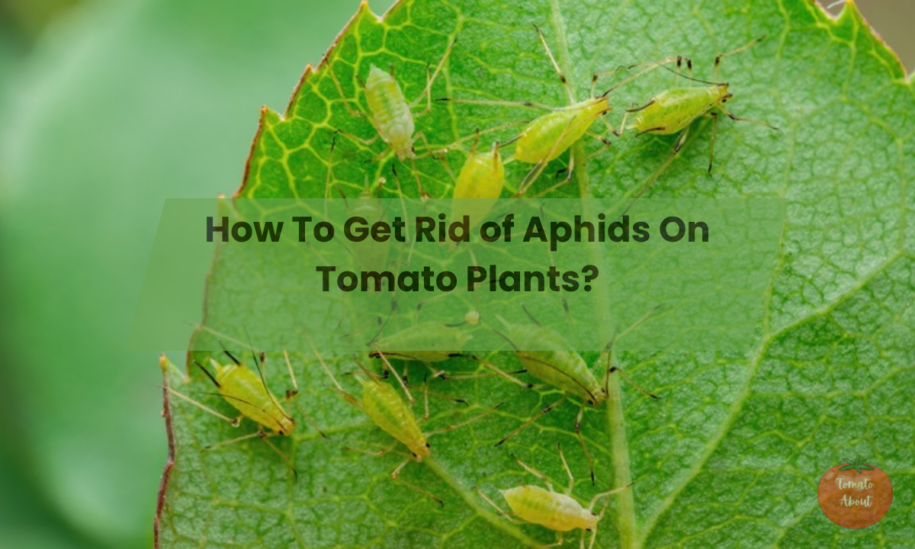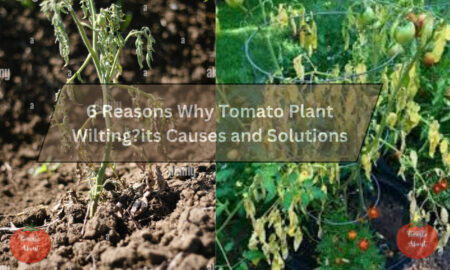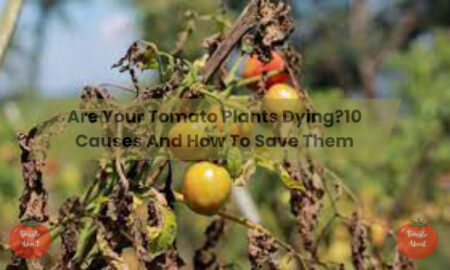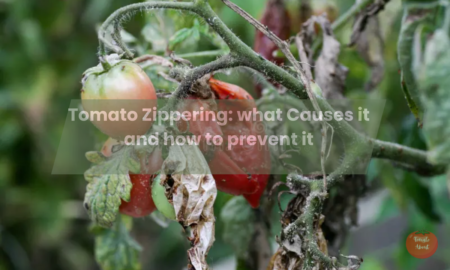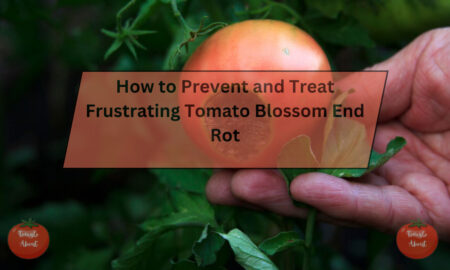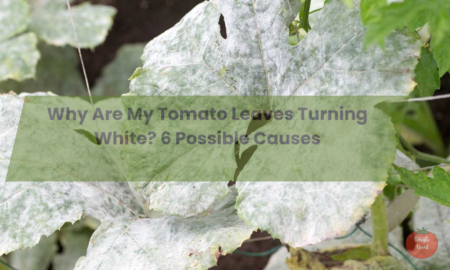Seeing those tiny green insects on your tomato plants can be incredibly frustrating. Aphids seem to appear out of nowhere and quickly begin feasting on the leaves and stems of your plants. Before you know it, they’ve multiplied into huge colonies that can stunt your plant’s growth and spread diseases.
Getting rid of aphids doesn’t have to be difficult though. With some diligence and using the right organic methods, you can kick those pests off your plants for good. In this article, I’ll share my proven techniques for getting rid of aphids on tomato plants fast so you can get back to growing a healthy vegetable garden.
What Are Aphids and Why Are They Harmful?
To control an enemy, you must first understand it. So what exactly are aphids and why are they such bad news for tomato plants?
Aphids are tiny, soft-bodied insects that use needle-like mouthparts to pierce plant tissue and suck out the sap inside. There are around 250 species of aphids in North America that can infest gardens and agricultural crops.
The most common culprits attacking tomatoes are the green peach aphid, potato aphid, foxglove aphid, and melon aphid. Adults reach 1-3 millimeters in length, so they can hide effectively on stems and under leaves.
Aphids do their damage in two ways:
- Sap-sucking damages plants – As they feed, aphids remove nutrients and sugars flowing through the plants’ vascular system which can cause leaves to curl, wilt, or become deformed. Heavy infestations can stunt growth.
- Viruses are spread – Aphids pass devastating plant viruses from infected to healthy plants as they feed. These viruses can’t be cured.
Aphids also secrete a clear, sticky waste product called honeydew. Ants love feeding on honeydew and will actually “farm” aphid colonies, protecting them from predators in exchange for this sweet treat. Spotting ants on tomato plants is often an early warning of an aphid infestation.
The real danger comes from aphids’ incredible reproductive capacity. Females can produce up to 12 nymphs daily, each of which is already pregnant itself. Populations can balloon exponentially in ideal conditions. This makes early detection and prompt control vital!
How to Identify Aphids on Tomato Plants
To control an aphid invasion, first you need to realize you have one! Here are the best practices for scouting:
- Inspect undersides of leaves first – With their weak legs and soft bodies, aphids prefer the protected undersides where they avoid detection.
- Check new foliage and growing tips – The youngest leaves and shoots contain the highest nitrogen levels which aphids require.
- Scan stems and developing buds – Aphids often hide in protected crevices as they feed.
- Watch for honeydew residue on foliage – This sticky waste product coats leaves as they feed. Where there’s honeydew, there’s aphids!
- Look for ants traversing plants – Ants have a symbiotic relationship with aphids, farming them for their honeydew secretions.
- Monitor weekly as a preventative measure – Early detection allows early intervention before infestations escalate out of control.
At the very first signs of aphids, it’s critical to take prompt action to get rid of them and prevent lasting damage.
Organic Ways to Get Rid of Aphids Fast
Safely getting rid of aphids fast is critical to protect tomato plants. Here are some of the most effective organic control methods:
Blast Them Off with Strong Water Sprays
Adjust your hose nozzle to the highest pressure stream setting and thoroughly spray all plant surfaces – tops and bottoms of leaves, stems, buds, and growing tips. The strong jet of water physically knocks aphids off the plant and keeps them from returning.
Aim for complete coverage and repeat the treatment every 2-3 days for at least two weeks. Rinsing the plants makes it difficult for wingless aphids to remain attached and continually expend their energy as they attempt to reestablish themselves.
Smother Aphids with DIY Neem Oil Spray
Extracted from the seeds of the neem tree, neem oil naturally coats soft-bodied insects like aphids and disrupts their feeding behaviors and reproduction. To make an effective home spray:
- Mix 1 tablespoon cold-pressed neem oil with 1/2 teaspoon mild liquid soap in 1 gallon of water
- Thoroughly coat all leaf surfaces, including undersides, stems, and new growth
- Spray in the early morning or evening when pollinators are less active
- Reapply every 7-10 days for 2-3 weeks
The oil penetrates the aphid exoskeleton and causes death by suffocation within 1-2 days. Neem oil is non-toxic to humans, plants, and helpful garden insects like ladybugs!
Release Predatory Insects for Natural Pest Control
Beneficial predator insects love feasting on juicy aphids. Purchase live ladybugs, lacewing eggs, or parasitoid wasps and release them around infested plants. As they eat, these predators will naturally control aphid populations without the need for chemicals. Just avoid pesticides that could harm them!
Deter Aphids with Floating Row Covers
Floating row covers work as physical barriers that prevent flying aphids from landing and colonizing plants. Drape the fabric over plants, leaving adequate slack for growth. Bury the edges to keep it anchored.
Install at the first sign of aphids and keep in place for 2-3 weeks until the infestation threat has passed. Remember to remove during flowering periods so pollination isn’t impacted.
Make Homemade Chili Pepper Spray
Peppers contain capsaicin compounds that naturally deter and irritate aphids. To make an easy spray:
- Blend 3 chopped hot peppers with 3 cups water and let steep for 24 hours
- Strain out the solids and mix in 1 tablespoon mild soap
- Coat the undersides of leaves thoroughly and reapply every 5-7 days
The soap helps the spray cling to foliage while the capsaicin repels and agitates aphids upon contact. This irritant effect deters feeding.
Control Ants in the Garden
Reducing ants can go a long way in controlling aphids. That’s because ants “farm” aphid colonies for their sticky honeydew secretions. Try these ant deterrents:
- Sprinkle crushed red pepper, cinnamon, dried peppermint, or garlic powder around the garden.
- Draw a chalk line around containers—ants avoid chalk.
- Place sticky barriers like tanglefoot or petroleum jelly on plant stakes.
- Fill shallow dishes with soapy water to trap foraging ants.
Without ants to protect them, aphid colonies become far more susceptible to predators.
Apply Fast-Acting Botanical Insecticides
Derived from plants, these ready-to-use insecticides are effective on contact but gentle on the environment:
- Pyrethrum – Extracted from chrysanthemums, it attacks aphids’ nervous systems
- Neem – Azadirachtin compound derived from neem trees is toxic to aphids
- Garlic – The sulfur compounds repel aphids and deter feeding
Follow label instructions carefully for concentration, application directions, and timing. Stick to the undersides of infested leaves for optimal contact. Botanical insecticides break down quickly in sunlight, necessitating repeated applications. Integrate with other control strategies for best results.
Remove Infested Leaves and Stems
Prune off leaves and stems that are heavily coated with aphids. This immediately reduces pest populations congregated on specific plant parts. Dispose of the infested trimmings in sealed bags so any dropped aphids cannot return and insects aren’t attracted to decaying material.
Removing the most heavily infested portions minimizes the spread of transmitted viruses and allows you to monitor for aphids re-accumulating on new growth.
Deploy Sticky Traps Near Plants
Yellow and blue sticky traps draw in winged adult aphids looking to colonize plants. Position traps near infested plants, 1-2 inches above the foliage. For major infestations, surround the entire garden perimeter with traps to catch inbound aphids.
Check traps frequently and replace as they fill up with dead aphids. Use traps as an early warning system and combine with other organic controls for maximum impact.
Natural Ways to Prevent Aphids from Returning
Knocking down an existing aphid infestation is only half the battle – you’ll also need to deter them from striking again:
- Apply diatomaceous earth – The sharp particles of this powder deter aphids from crawling onto plants. Sprinkle around bases, but avoid flower buds.
- Use reflective mulch – Aluminum foil or mylar mulch repels aphids by confusing their search for green plants to colonize.
- Eliminate garden trash – Remove weeds, old debris, and plant remains to preclude aphid populations from thriving when not on vegetables.
- Clean up ant nests – Ants have a mutualistic relationship with aphids, protecting them from predators. Removing ants helps limit this alliance.
- Monitor vigilantly – Frequent inspection allows early detection and treatment before infestations escalate out of control.
Strong, vigorous plants also have increased resilience against pests. Space tomatoes appropriately, avoid overcrowding, and fertilize organically with compost or fish emulsion. Healthy, thriving plants better withstand and recover from pest damage.
Rotating vegetable families over the years limits the carryover of pests and diseases. This deprives aphids of ideal continuous habitat and breeding conditions.
When Should You Resort to Pesticide Sprays for Aphids?
For severe infestations, pesticide options may become necessary when natural treatments alone are ineffective:
- Insecticidal oils – Superior oils coat insects and leaves, blocking respiration and causing suffocation. Avoid spraying open flowers which can be damaged.
- Systemic insecticides – applied to roots and absorbed through vascular tissue, making sap toxic to sucking insects. Use with extreme caution due to toxicity concerns.
- Insecticidal soaps – Potassium salts of fatty acids penetrate exoskeletons and cause cell membrane disruption in soft-bodied insects. More effective than water sprays alone.
- Neonicotinoids – Compounds like imidacloprid overstimulate the nervous systems of insects leading to death. Harmful to bees, so avoid spraying during bloom time.
Always exercise caution and carefully weigh risks before using potent chemicals. Prioritize safety for people, pets, and the environment. Stick to gentler organics whenever possible.
Can Tomato Plants Recover from Aphids?
The good news is tomato plants are resilient and with prompt treatment, they can make a full recovery from aphid damage. Consistently implementing organic control measures knocks back the pests before they inflict lasting harm.
While the viruses transmitted by aphids can’t be cured, the plants can still survive and produce if the infestation is eliminated before widespread infection. So early intervention is vital!
As long as the tomato plant is still actively growing, it can regenerate new healthy leaves and flowers, restore its vigor, and continue fruiting. The key is getting the infestation fully under control before the plant is drained of resources.
How to Stop Aphids from Coming Back in future?
Getting rid of current aphids is only half the battle – you’ll also need to deter them from striking again:
- Remove heavily infested leaves and stems where colonies are concentrated
- Eliminate weeds, old plant debris, and garden trash that harbor aphids
- Apply diatomaceous earth around bases of plants to deter insects
- Use aluminum foil or mylar mulch to make plants less attractive
- Fertilize with fish emulsion or compost tea to strengthen plants
- Cover susceptible seedlings and transplants with row covers
- Monitor plants extremely closely after initial infestation for recurrence
Strong, vigorous plants have increased resilience against pests. Space tomatoes appropriately and avoid overcrowding to reduce competition for nutrients and light. Consistent watering and ideal growing conditions make them less vulnerable.
Rotating seasonal plantings interrupts reproductive cycles. This limits pest carryover and prevents diseases from compounding year to year.
Frequently Asked Questions
Should I discard tomato fruits that have aphids on them?
A: No, the tomatoes themselves are still safe to eat. Simply rinse the fruits well under cool running water. Aphids do not burrow inside, so washing them off the skin surface eliminates any pest residue.
Q: How often should I apply treatments like neem oil or insecticidal soap sprays?
A: Reapply every 5-7 days for 2-3 weeks to interrupt the aphid life cycle. More frequent applications are needed as new generations hatch. Scout plants closely between treatments to monitor effectiveness.
Q: Will removing weeds and debris from around my tomato plants help control aphids?
A: Yes, eliminating alternate host plants like weeds and removing garden trash deprives aphids of ideal breeding grounds when they are not colonizing the tomatoes. This support strategy bolsters other treatments.
Wrapping up!
Aphids may be tiny, but they can quickly become a huge nuisance in the vegetable garden. The good news is there are many effective, non-toxic ways to control them naturally.
By taking a multi-pronged approach with regular inspection, spraying, and beneficial insects you can get an aphid infestation under control quickly. With some diligence, you can rid your tomato plants of these sap-sucking pests and enjoy the bountiful harvests you deserve!

